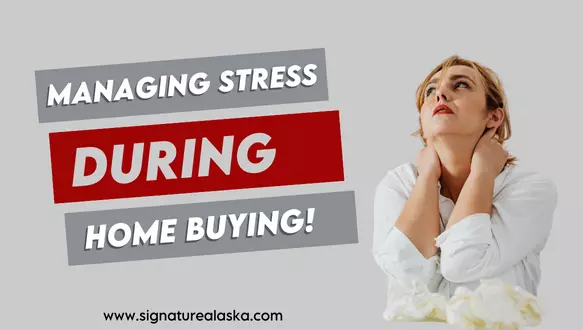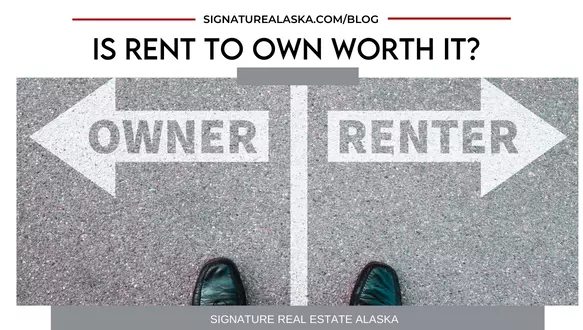
11 Steps To Downsizing Your Home
Nothing lasts forever -- including a home where you raised a family or lived most of your working life. And it's a fact of life that suddenly, a place that was perfect for you a decade or two ago might start to feel cavernous and empty (or just contain more square footage than you really want to clean regularly).If you're starting to dream about trading in your rambling old house for a smaller cottage or new condo, then it's probably time to seriously consider downsizing from your current home. Before you start shopping and put your home on the market, though, there are a few things you need to think about and discuss with any family members who'll be making the journey with you. Consider your finances It's tempting to look up your home on a website like Zillow or Redfin and revel in how much money it's worth today. So finances might not be top-of-mind when you're thinking about downsizing -- you may believe that you're guaranteed to save money, but that's not always the case.Mortgage rates have been rising steadily, and if you bought or refinanced your home during the years of historic low rates, then you might get a bit of sticker-shock at how much you'll pay in mortgage interest over the life of the loan. And even as your home's value has increased, others have, too -- so unless you're also perusing the type of home where you'd ideally move after your downsizing, you might not be prepared to spend what's necessary on a new place. Also, hopefully your credit score has been maintained or improved since you moved in, but if not, that's something else you'll have to consider.Depending on where you want to move, there might also be homeowners' association (HOA) restrictions and dues, new taxes to consider if you're changing counties or moving to a new state, and a number of other fees and expenses that haven't yet factored into your accounting. If you have a financial advisor, now would be a good time to talk to that person about downsizing and get some background on what it would mean for you financially. Think about space A lot of people really love the idea of living in a tiny home, but in practice, it's not always as fun as it sounds. You might be well aware that the amount of house you have is in excess of what you really need, but if you don't think hard about the right amount of space for you at this time in your life, then wherever you land might also be too big ... or too small, on the other end of the spectrum.Talk to any family members coming with you, if applicable, about what your needs are right now. If you aren't sure what might feel "right," then visit some open houses for smaller homes (warning: you might be tempted to buy one -- resist!) or, if there's an IKEA handy, head there for an afternoon and walk through some of the showroom examples. Wherever you go, bring a notebook or use an app on your phone to record the square footage of the home and a few sentences or words to help you remember whether you felt like it was too big, too small -- or just right.In addition to interior space, you'll want to think about lot size. Do you really want an acre of lawn to maintain, or on the flip side, will you miss having a bit of grass to mow? See if you and any moving partners can come to some kind of resolution about the ideal space guidelines for this new leg of your life. Ask yourself: Can you change enough to stay? Another option to consider while you're examining your finances is the opposite of downsizing: remodeling and staying put. It's an increasingly popular solution to the too-much-house problem, and it's possible that it could be right for you.Maybe you can convert one floor of your home into a small unit and rent it out, for example. Maybe you need wider stairs, or maybe the bathroom needs an update and some adjustments. If it's not really the space that's the issue, but instead it's the features of the home, then it's very possible you might be able to get away with updating and revamping some things and then staying where you are.Talk to a contractor or possibly even an architect (depending on the scope of changes) about what to do and get a ballpark figure for what it might cost, realizing that it's likely to go over-budget. Then decide whether a big change might be enough to keep you where you are. Decide where to go If you're bent on moving out of your current place, then the obvious next question that everyone is going to ask -- from your relatives to your real estate agent -- is "where are you going?"Maybe you know you want to stay in the same general area, but you want to be a bit closer to amenities like the park or the grocery store. Or perhaps you have it in your head to shift gears entirely and move to a different city or state, or even a different country.It's not enough to just want a change -- you need to have a goal, a reason for the change, because moving is never fun, and downsizing can be especially taxing. Think about where you've always wanted to live and why, and then decide where you're going to plant your roots for the next set of life adventures. Factor in cost-of-living changes While you're thinking about your finances, it's a good idea to also consider whether you'll be accruing any additional cost-of-living changes. This is best done after you know where you'll be moving -- cost of living might not fluctuate all that much within a city or a county, but if you're moving to a different state, or from the suburbs to the city or the city to the suburbs, then there might be some additional costs that you're not used to and therefore aren't considering.It might not be a bad idea to talk to a real estate agent or people you know who live where you want to move. Ask them how much groceries and gas cost, what they pay for utilities and parking, and whether they can share any tips or insight into other costs of living. You might discover that it costs an arm and a leg to call up a ride-share car on your phone like you're used to doing, but that there's a reasonably priced train that's very accessible -- so increased cost of living items might not be dealbreakers, but they're still something to understand and consider. Find a place to land Now that you've got an idea of where you're going and how much it will cost, it's a good idea to start looking more specifically at your housing options. Even if you don't buy a house or condo immediately, you'll want to familiarize yourself with how big the homes are in the area where you want to move, and to get a ballpark feel for how much space you'll have to work with in the new place. If it's possible, you may also want to get specific measurements for a typical room (including floor-to-ceiling height).This way you'll have what you need to evaluate all your stuff -- your furniture, your kitchenware, even your clothes -- and to start making the tough decisions about what's going to stay and what has to go. Replacing and shedding furniture You probably already know that you're going to be getting rid of some furniture -- they don't call it "downsizing" because you're adding new items. But knowing exactly what to bring and what to purge can be difficult, especially if you love a particular item of furniture but can't see its future in your new home.There are companies that can help you with this exercise (such as everythingbutthehouse.com), and if you decide to go solo, there are also lots of tips on how to furnish a smaller space. First, prioritize your own current furniture by considering its size, its function, and its daily usage. Eliminate any duplicate items -- for example, the ten-person dining room set is probably unnecessary if you have a four-person dinette that's tucked in the breakfast nook.It might also be worth considering replacing some of your furniture -- a bed with drawers underneath the mattress platform could be a better investment than the luxurious but space-hogging four-poster. Make sure you're taking measurements of anything you buy and comparing it against what you know about your new place so that you don't wind up cramming way too much furniture into a smaller space. Getting rid of excess baggage Apart from furniture, you'll need to think about all your stuff, the books and decorations and clothes and kitchenware and appliances. The kitchen is another good place to demand multitasking from your gadgets, especially if you'll be losing cabinet space in the move. There are new appliances that might be a worthwhile investment because they'll help you get rid of two or three existing appliances, so do a little bit of research before you start making serious decisions there.This is probably the hardest step, all in all, because there's a lot that you might want to keep but just doesn't make sense with your new lifestyle. Instead of considering it a loss, try to think of the baggage-shedding as an opportunity to free yourself from these possessions and find them a new home where they'll be more appreciated and loved. Understand your storage options Some condos have a storage closet where you can stash overflow, and if you're moving into a new house, there might even be a garage, basement, or attic where your boxes can lurk. Whatever the case, think about all your options -- including renting a storage unit -- and make sure you factor in anything that you currently have in storage and aren't willing to let go of just yet.Speaking of renting a storage unit, you should know this: It's a popular option when downsizing, but if you find yourself with a giant stash of things that you're going to store, ask yourself how likely it is that you'll ever go to visit that stuff, pull it out, look at it, or enjoy it in any way. The idea of just putting everything away but still possessing it can be very seductive, but realistically, most of the time you're just creating another headache for yourself and potentially for the executors of your estate. If you like it, but not enough to keep it in the house with you, then maybe it's time to say goodbye. Organize, organize, organize Chaos is part of any move, and downsizing can be especially fraught because there are more moving parts to the process. The more organized you can be at every level, the better this move will go.Make sure your finances are well-organized to start with, then start applying that focus and detail-orientation to everything else. If you can, sometimes it's easiest to move yourself out first with anything you know you're taking with you, then ask your family and friends to help themselves to whatever they might want. After that, you can sell the rest -- either in bulk to a company or service like everythingbutthehouse.com or piecemeal, depending on your preferences -- or donate it; there are many donation services that will come pick things up from your house so you don't have to cart them into a donation center."A place for everything and everything in its place" is an aspirational goal for many of us, but when you're downsizing, try to make it your (at least temporary) mantra. It will guide you through the downsizing process and help keep you organized to boot. Make the move When it's finally time to execute, it's very common for downsizers to be seized with second thoughts. Will you like your new home as much as your old one? Will you miss your things too much to fathom? What if you're making a huge mistake? What if you change your mind?The good news is that humans, despite hating the idea of change, are highly adaptable creatures. Make a list of all the things that you don't like about your about-to-be-downsized house and lifestyle, and refer to it often throughout the process. You can even pull it back up in the new place to remind yourself why you moved if something is frustrating or annoying you. But within a few weeks or months, it'll be hard to imagine how you ever managed before downsizing, so in the meantime, trust the process and find a solid team that can help you get from your oversized starting line to the just-right finishing line.

Take Advantage of These Common Homeowner Tax Breaks
Being a homeowner definitely has its advantages, and saving money on your taxes each year just might be at the top of the list. Make sure you're taking advantage of these common tax perks as a homeowner:1) Mortgage interestOne of the most common tax perks, you can deduct mortgage interest for your primary residence, and for a second home as long as you mean certain conditions. 2) Equity loan interestIf you have a line of credit or home equity loan, you may be able to deduct some of the interest within IRS limits. 3) Property taxes or real estate taxesState or city property taxes are fully deductible from your income. Your mortgage lender may have required you to set up an escrow account, and in this case, you can only deduct escrow money held for property taxes when the funds are used to pay the property taxes. Keep in mind that if you receive a refund on city or state property taxes, this will reduce your federal deduction.4) PointsOn your fee schedule from your lender, you'll probably notice some different charges. One charge is called, "points" and one point equals 1% of your loan principal. It's common for home loans to have 1-3 points and you can deduct all points associated with a home purchase mortgage. If you have refinanced loan points, you can also deduct these, but only over the life of the loan, and not all at one time. If you refinance, you can deduct the balance of the old points and begin to amortize the new right away. 5) Costs associated with moving for workIf you moved to a new home for a new job, you might be able to deduct some of your moving expenses. There are some stipulations to qualification, like your new job has to be at least 50 miles away farther from your old home than your previous job was. Some of the moving expenses you might be able to deduct include costs for storage, transportation, and lodging.6) Home improvement loan interestIf you've completed some home improvements that are considered a "capital improvement" and took out a loan to cover the upgrades, you can deduct the interest on it, with no upper dollar limit. The home improvements can't be for ordinary repairs like drywall repair, painting, fixing gutters or patching a roof--they need to be renovations that contribute to increasing the property value of your home. Items such as a new roof, pool, a garage, addition, landscaping, or insulation would all likely qualify.7) Home office deductionIf you work from home and have a dedicated home office that you use exclusively for your work, you may be able to deduct a portion of your home costs such as a percentage of depreciation and insurance. 8) Selling costsIf you sell your home, you might be able to reduce your taxable capital gain by the amount of your associated selling costs. Some of the selling costs that you can deduct from your profit include legal fees, inspection costs, title insurance, broker's commissions, and title insurance.9) Capital gains exclusionIf you're married, file taxes jointly, and sell your home, you can keep up to $500,000 in profit on the sale of a home as long as it was your principal residence for at least 2 of the past 5 years. Married couples filing separately, as well as singles, can keep up to $250,000 each, tax-free. 10) Buying a home for the first timeIf you're a first-time homeowner, you might be able to withdraw up to $10,000 from a traditional IRA without a penalty to help cover the costs of purchasing a home. Work with a tax professional to help maximize all the tax breaks for your unique situation. Need a recommendation for a tax professional or have questions? Get in touch!

What You Need to Know About Fixed vs. Adjustable Rates
You're about to become a first-time homeowner—this is an exciting time! As you begin working with lenders on securing pre-approval for a mortgage, you probably hear some terms when it comes to mortgage interest rates such as "fixed" and "adjustable." To help you make a smart decision, here’s what you need to know about these types of interest rates. Interest Rate 101 An interest rate is the cost of borrowing money. When you borrow money to purchase a home, the interest rate applies to how much the home will cost you with borrowed money rather than saving a lump sum for the entire purchase price. Fixed Interest Rate The most straightforward type of rate is a fixed one. With a fixed interest rate, this means the rate and payments stay the same, regardless of what's happening with the economy. Some homebuyers may be drawn to fixed interest rates since they offer rate security, making for easy budgeting, though it can end up costing more money in the long run. In the event rates go down, homeowners with fixed-rate mortgages will need to refinance. Refinancing with a reduced rate will save you some money, but keep in mind there will be upfront closing costs and time spent getting approved for a mortgage all over again with your tax documents, bank statements, and more. Adjustable Interest Rate Often referred to as an Adjustable Rate Mortgage, or "ARM," these types of loans can seem complicated to a first-time homebuyer. With an adjustable interest rate, borrowers are offered lower rates and subsequently lower monthly payments early in the mortgage loan term. ARMs let borrowers take advantage of falling interest rates without needing to refinance. When you refinance, there’s a significant time investment, and it will cost money each time you refinance. When you have an ARM, you can watch rates and your monthly payment fall without having to do anything. An adjustable rate is a less expensive way for homebuyers who don’t plan on staying in one place for very long. On the flip side, with an ARM, your rates and payments can also go up over the life of your mortgage loan. These rates will usually have an annual cap, so if rates rise significantly and quickly, you might not be affected right away. On certain ARMs, called negative amortization loans, borrowers could wind up owing more than they did at closing because the payments on these loans are set so low to make the loans affordable that they cover only part of the interest due. The rest ends up getting baked into the principal balance. The low initial cost of adjustable-rate mortgages might be tempting, but they bring a degree of risk and uncertainty in the long run. Fixed or Adjustable Interest Rate: Which Is Better? There isn’t a straightforward answer about which type of interest rate might be better than the other. There are several unique factors to take into account such as the length of your loan, the index your lender uses, the number and timing of rate adjustments, and any assumptions about the future increase or decrease in rates. Work with a reputable and trustworthy lender to review the pros and cons of each type of interest rate for your situation. Have questions or just looking for a little advice on where to start? Get in touch!
Categories
Recent Posts










